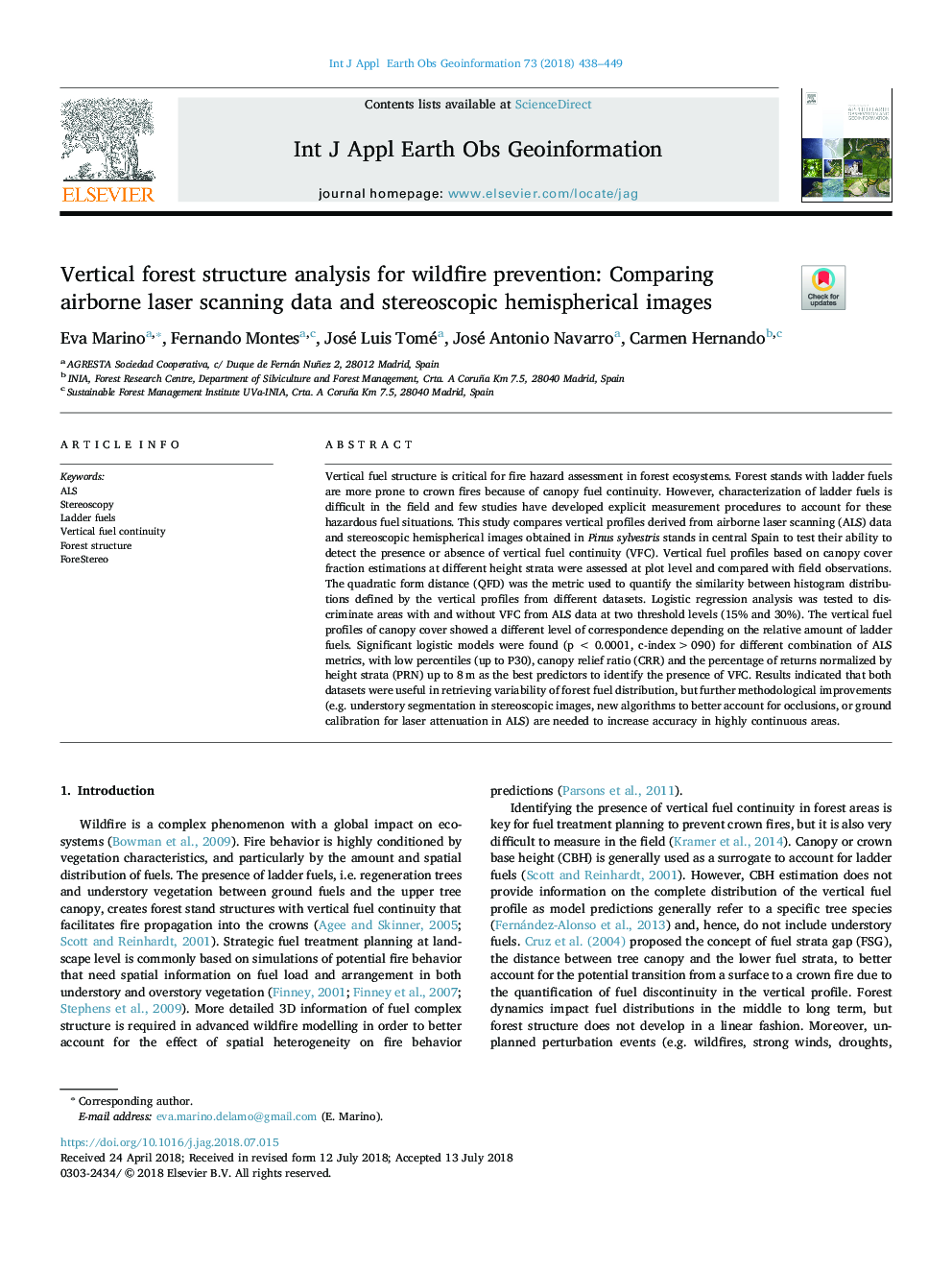| Article ID | Journal | Published Year | Pages | File Type |
|---|---|---|---|---|
| 8867809 | International Journal of Applied Earth Observation and Geoinformation | 2018 | 12 Pages |
Abstract
Vertical fuel structure is critical for fire hazard assessment in forest ecosystems. Forest stands with ladder fuels are more prone to crown fires because of canopy fuel continuity. However, characterization of ladder fuels is difficult in the field and few studies have developed explicit measurement procedures to account for these hazardous fuel situations. This study compares vertical profiles derived from airborne laser scanning (ALS) data and stereoscopic hemispherical images obtained in Pinus sylvestris stands in central Spain to test their ability to detect the presence or absence of vertical fuel continuity (VFC). Vertical fuel profiles based on canopy cover fraction estimations at different height strata were assessed at plot level and compared with field observations. The quadratic form distance (QFD) was the metric used to quantify the similarity between histogram distributions defined by the vertical profiles from different datasets. Logistic regression analysis was tested to discriminate areas with and without VFC from ALS data at two threshold levels (15% and 30%). The vertical fuel profiles of canopy cover showed a different level of correspondence depending on the relative amount of ladder fuels. Significant logistic models were found (pâ<â0.0001, c-index>090) for different combination of ALS metrics, with low percentiles (up to P30), canopy relief ratio (CRR) and the percentage of returns normalized by height strata (PRN) up to 8âm as the best predictors to identify the presence of VFC. Results indicated that both datasets were useful in retrieving variability of forest fuel distribution, but further methodological improvements (e.g. understory segmentation in stereoscopic images, new algorithms to better account for occlusions, or ground calibration for laser attenuation in ALS) are needed to increase accuracy in highly continuous areas.
Keywords
Related Topics
Physical Sciences and Engineering
Earth and Planetary Sciences
Computers in Earth Sciences
Authors
Eva Marino, Fernando Montes, José Luis Tomé, José Antonio Navarro, Carmen Hernando,
